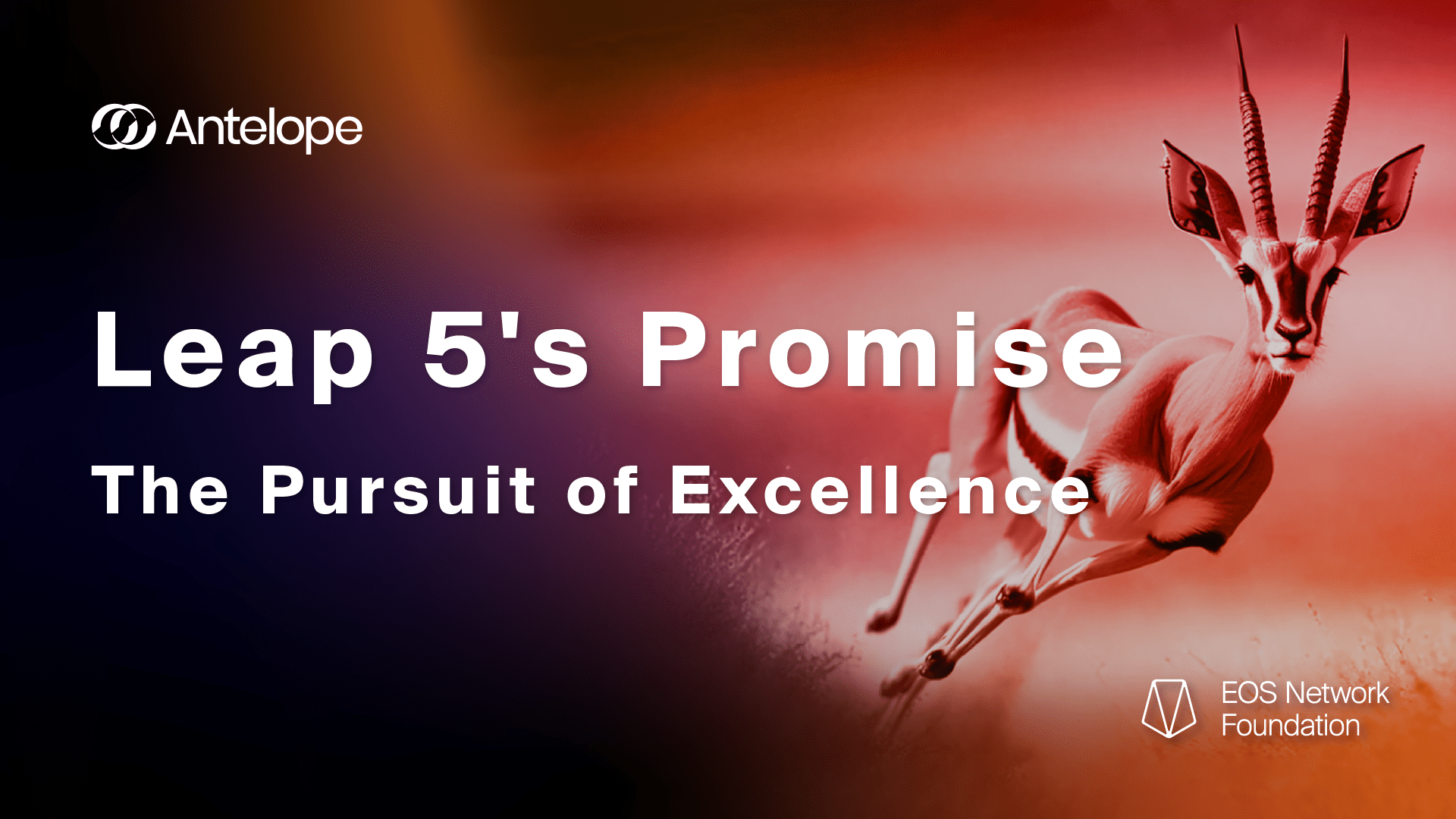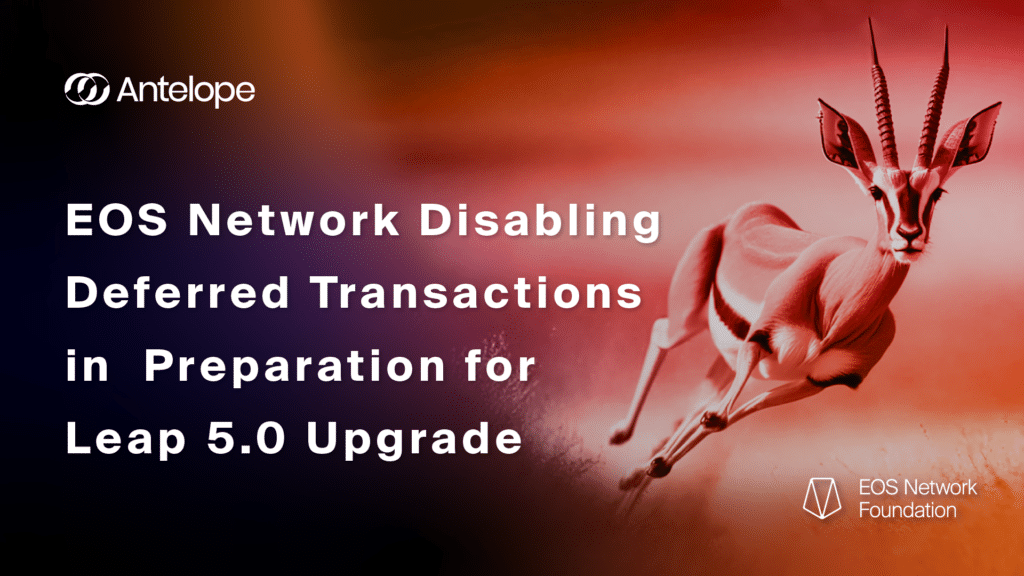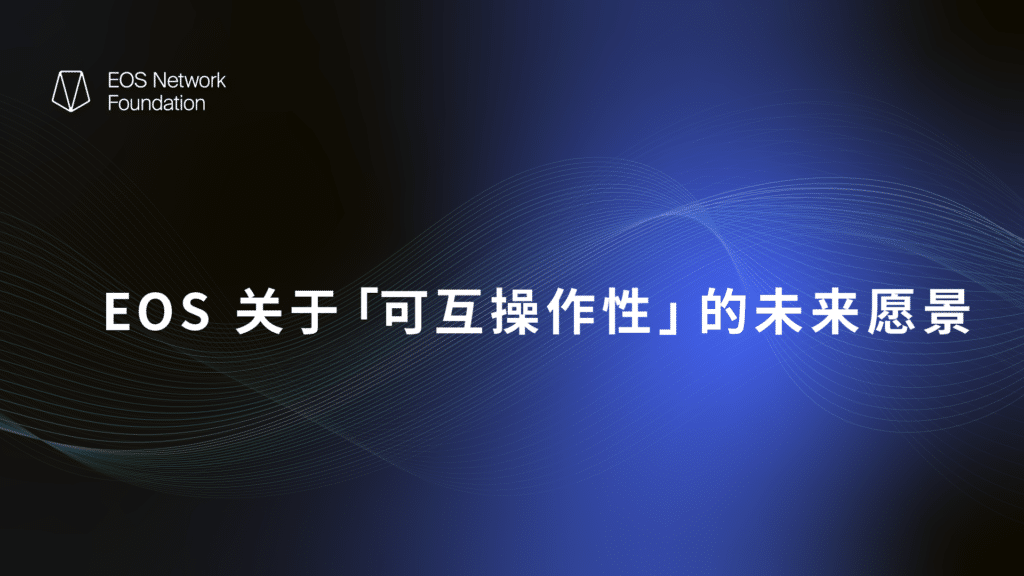The much-anticipated release of Leap 5 is on the horizon and is poised to further advance the EOS Network with a suite of enhancements designed to deliver unparalleled value for Developers, API Providers, and Node Operators alike. This iteration of Leap features significant improvements in speed, efficiency, control, and flexibility.
In the pursuit of excellence, EOS Network engineers are dedicated to a considered approach that ensures every feature meets our high standards. After thorough study it has been concluded that Instant Finality, initially slated for Leap 5, will be delivered in a following release.
The Evolution of Consensus: EOS Engineering’s Vision
The primary challenge faced by any blockchain system is ensuring unanimous agreement on the precise sequence of transactions to be processed, among all honest nodes within the network. This agreement is vital as it enables nodes to replicate deterministic computations, achieving identical states at a given block height. This complex issue is commonly referred to as consensus, and over the years, numerous methodologies have been explored to address it, some predating the inception of blockchain technology. While we draw upon a wealth of knowledge from existing consensus research, the demands of public blockchain networks necessitate a combination of stringent properties from the consensus algorithm that have not been thoroughly considered by traditionally available algorithms.
The Antelope protocol’s current consensus algorithm has been the cornerstone of our ecosystem for over five years. It was cutting edge in its time, delivering groundbreaking features to the blockchain space, such as true finality for transactions; however, it also carries limitations from its time. A notable limitation of our current consensus algorithm is its linear scalability with the number of active block producers (BPs). In practice, this means that despite EOS’s rapid 0.5-second block times, with 21 BPs, time-to-finality extends to roughly 3 minutes. Furthermore, if the number of BPs were to double to 42, time-to-finality would likewise double, reaching approximately 6 minutes.
EOS has always been on the leading edge of blockchain solutions, and recent advancements in the study of consensus algorithms have alleviated some of the limitations that EOS currently has. Leveraging an algorithm known as HotStuff we can eliminate the linear scaling constraint. We have an early proof-of-concept that demonstrates a time-to-finality of mere seconds while scaling to a larger number of block producers. However, adapting this algorithm to meet the heightened demands of a public blockchain environment necessitates going above and beyond the academic literature. Effectively, we are in the process of crafting a new consensus algorithm that builds upon the core ideas established in the HotStuff algorithm. When doing this we must take on the responsibility of preserving the safety and liveness of the consensus algorithm. Said plainly, we will prove beyond a shadow of a doubt that the blockchain is safe from double spends. In addition, we will continue to build software that meets the highest standard and runs without interruption.
We wish to stress that it is non-negotiable for us to conduct thorough and comprehensive analysis and testing to ensure the new consensus algorithm possesses the requisite safety and liveness properties. For such a pivotal component of the EOS Network, our threshold of assurance demands mathematically rigorous proofs demonstrating that the desired properties hold for the new consensus algorithm. We are unwavering in our commitment to sustaining EOS’s uninterrupted operation, which has endured for over five years. We are resolute in ensuring that our software, which is integral to the core operations of the EOS Network, undergoes extensive testing to mitigate any potential risks.
We deeply value your understanding and patience as we iteratively refine the algorithm and its implementation, rigorously test the software, and generate mathematical proofs for subsequent peer review. Rest assured, we remain steadfast in our commitment to delivering a product that upholds the highest standards of reliability and trustworthiness.
Technological Harmony: Leap 5’s Balanced Enhancements
Leap 5 is set to greatly enhance the EOS Network, providing a solid foundation upon which to merge the future consensus upgrade required by Leap 6, while still offering significant improvements for Developers, API Providers, and Node Operators. The update focuses on four primary themes: Relax Constraints, Increase Speed, Improve Efficiency, and Enhance Control.
Relax Constraints
Leap 5 modifies the behavior controlled by two parameters that constrained the execution of smart contracts.
The first parameter is max-nonprivileged-inline-action-size which is removed from Leap 5 so that the only constraint on inline action size comes from the objective limit (max_inline_action_size) that is managed on-chain.
In practice, this change means smart contracts can send larger payloads via inline actions when communicating with other contracts. For example, EOS EVM’s new call action could be used to deploy EVM contracts greater in size than 4 KiB from an EOS smart contract.
The second parameter is max-transaction-time which is given a new default value so that transaction wall-clock deadline is effectively driven by the objective limit (max_transaction_cpu_usage) that is managed on-chain.
In practice, this change means transactions can do more work within the longer time duration allotted to them. For example, EOS EVM can take advantage of the relaxed transaction wall-clock deadline to successfully execute more computationally-heavy EVM transactions that may have been rejected previously.
Increase Speed
Leap 5 promises a 4X speed boost for ABI intensive requests, enabled by non-blocking deserialization. It also expands the scale of read-only transactions through parallel processing on up to 128 threads.
Furthermore, EOS VM OC can now be used to better optimize select smart contracts to execute the same smart contract code often in a significantly shorter window of time. This optimization is currently only limited to trusted smart contracts that are deployed to accounts that have a name starting with the “eosio.” prefix.
The smart contracts for EOS EVM are deployed on accounts with the “eosio.” prefix which means EOS EVM can take advantage of the speed improvements enabled by the optimization feature. This provides further ways for computationally-heavy EVM transactions to fit within the limits imposed by the transaction wall-clock deadline.
Improve Efficiency
Antelope networks become more cost-effective with Leap 5, thanks to features like streamlined sync and memory-optimized chainbase, reducing state memory consumption by approximately 20%.
Enhance Control
Node operators gain enhanced control options, including the ability to customize node setups, troubleshoot peering challenges with Prometheus logging, and benefit from efficient, secure local-only connections.
Leap 5’s Key Enhancements
As we usher in the era of Leap 5, distinct improvements tailored for Developers, API Providers, and Node Operators alike mark the evolution of the EOS Network. This new version exemplifies a harmonious blend of enhanced performance, scalability, and efficiency, crafted with precision to cater to the diverse needs of its users.
Developers
Developers will enjoy an environment where the bounds of transactions are expanded, paving the way for complex computations and interactions between contracts.
API Providers
For API Providers, Leap 5 is synonymous with amplified performance. With improved read capabilities, APIs are not only faster but are crafted to deliver unmatched reliability and scalability. Every interaction is designed to be a seamless experience, echoing the ethos of speed and efficiency.
Node Operators
Node Operators aren’t left behind in this journey of transformation. Leap 5 promises enhanced transaction processing efficiency, a testament to the meticulous engineering that underpins it. With a reduced memory footprint and enriched control over networking, node operators are equipped with tools that are not just powerful but intuitive, and responsive.
Leap 5 Enhancements Pending Future Activation
Certain enhancements, although present in the Leap 5 software, are protocol level features and will not be available until their corresponding protocol features are activated. While EOS will not be performing a consensus level upgrade this year, these enhancements are still available for any Antelope chains (especially test chains) to adopt earlier.
New Cryptographic Primitives
New host functions allow smart contracts to carry out mathematical operations with the BLS12-381 elliptic curve. When activated, smart contracts could use these host functions for various applications including new zero-knowledge proof systems.
Disabling Deferred Transactions
We began the process of disabling deferred transactions on the EOS Network by asking node operators to change a configuration option which modifies the behavior of their block production nodes such that the Leap node would disallow deferred transactions from successfully completing within the blocks it produces. Leap 5 takes the next step in this process by enforcing that behavior change in code. Leap 5 block production nodes block inclusion of any new user-submitted delayed transactions.
Leap 5 also introduces new protocol features that, when activated, completes the process of disabling deferred transactions by making changes to the protocol rules so that no new deferred transactions could be added to the blockchain and any existing deferred transactions would be rapidly canceled with an expired status.
Mapping the Future: Insights into Leap’s Feature Progression
We’ve outlined the key enhancements that Leap 5 brings to Developers, API Providers, and Node Operators. Each improvement is a reflection of the ongoing commitment to evolving the EOS Network, ensuring that it’s not only robust, but also efficient and user-friendly.
This journey is iterative. Our adaptation stems from a strategic commitment to balancing innovation with the highest standards of reliability and performance that are characteristic of the EOS Network. In that spirit, we will continue to refine those features such as Instant Finality, now scheduled for a Leap 6 release, in line with our usual autumn consensus upgrade (hard fork) release cadence.
Stay tuned for upcoming articles that will provide a deeper dive into each Leap 5 feature discussed here. We aim to offer clarity, insight, and detailed information to keep our community well-informed and engaged in the development of the EOS Network. We’re grateful for your patience and eagerness to embrace upcoming innovations.
Related Media
Check out the recent Antelope Coalition call where additional details of the Leap 5 consensus update were covered in depth by the representatives from Coalition chains EOS, WAX, UX Network, and Telos.
EOS Network
The EOS Network is a 3rd generation blockchain platform powered by the EOS VM, a low-latency, highly performant, and extensible WebAssembly engine for deterministic execution of near feeless transactions; purpose-built for enabling optimal Web3 user and developer experiences. EOS is the flagship blockchain and financial center of the Antelope framework, serving as the driving force behind multi-chain collaboration and public goods funding for tools and infrastructure through the EOS Network Foundation (ENF).
EOS EVM
The EOS EVM is an emulation of the Ethereum EVM, housed within an EOS smart contract. It offers feature parity to other EVMs in the space but with unmatched speed, performance and compatibility. EOS EVM connects the EOS ecosystem to the Ethereum ecosystem by allowing developers to deploy a wide array of Solidity-based digital assets and innovative dApps on EOS. Developers can use EOS EVM to take advantage of Ethereum’s battle-tested open source code, tooling, libraries and SDKs, while leveraging the superior performance of EOS.
EOS Network Foundation
The EOS Network Foundation (ENF) was forged through a vision for a prosperous and decentralized future. Through our key stakeholder engagement, community programs, ecosystem funding, and support of an open technology ecosystem, the ENF is transforming Web3. Founded in 2021, the ENF is the hub for EOS Network, a leading open source platform with a suite of stable frameworks, tools, and libraries for blockchain deployments. Together, we are bringing innovations that our community builds and are committed to a stronger future for all.



